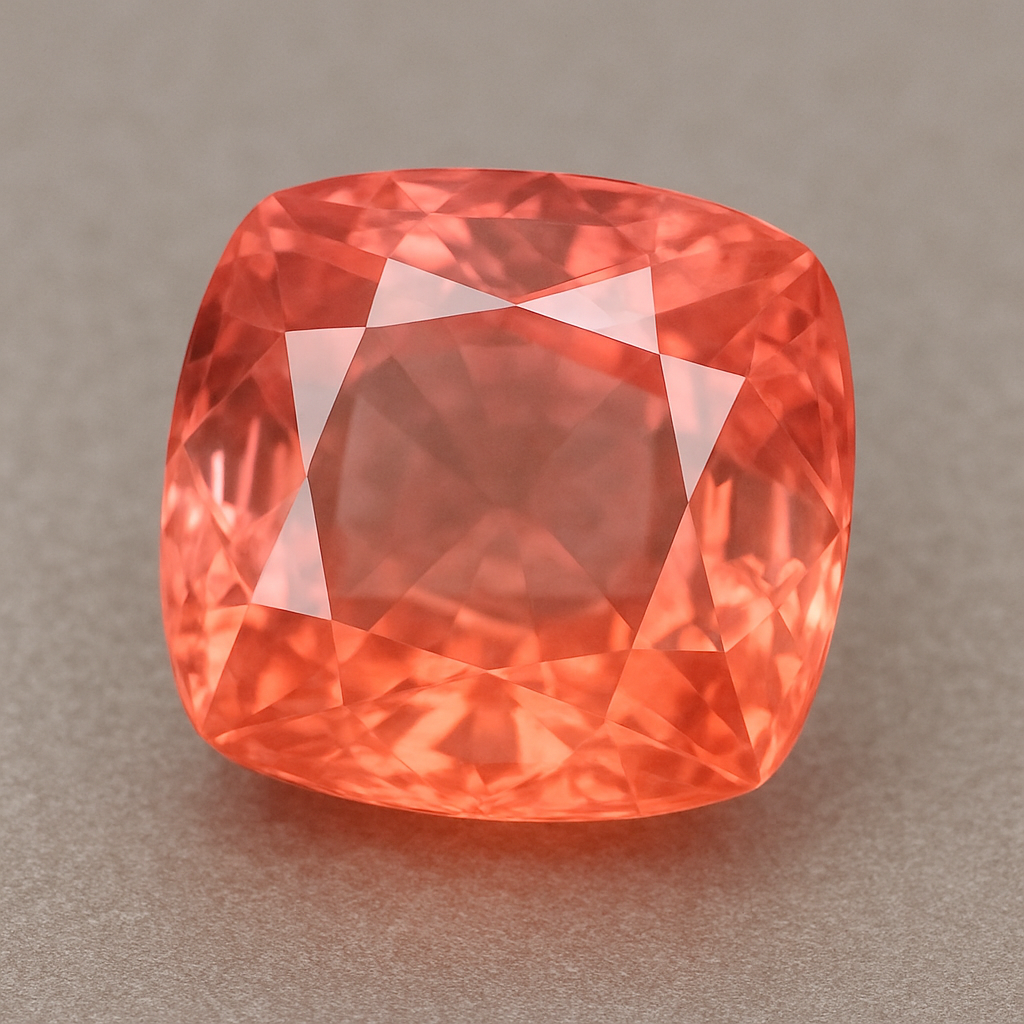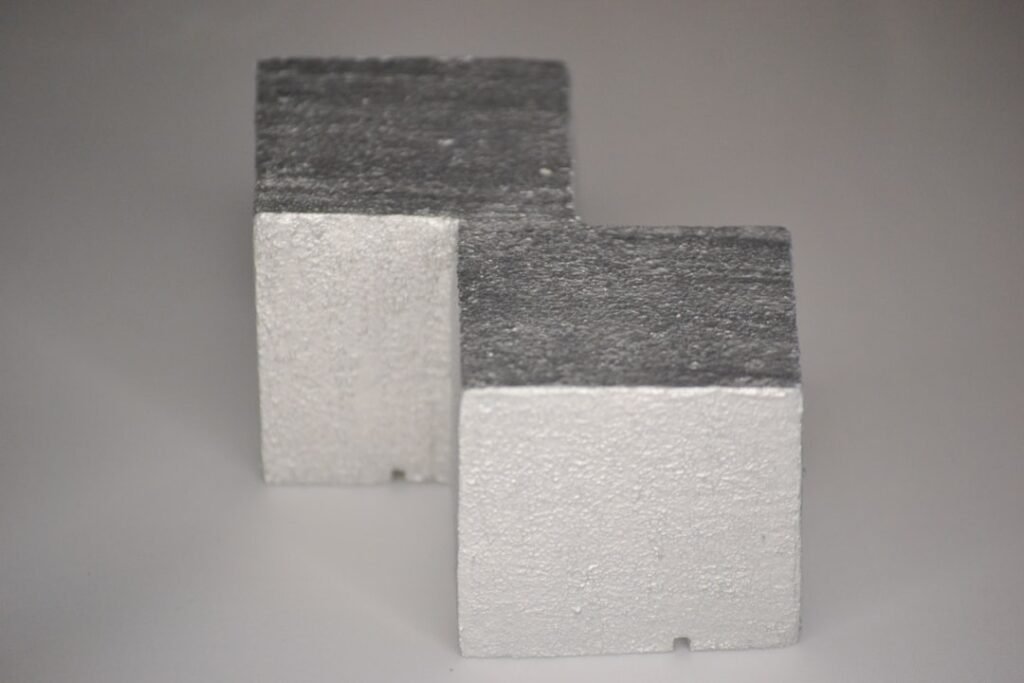Corundum is a fascinating mineral, best known for its hardness and vibrant colors. As the second hardest natural mineral after diamond, corundum has found its place in both industrial applications and the world of gemstones. In this article, we will delve into the properties, types, and uses of raw corundum, as well as the colors it exhibits and its characteristics.
Corundum is a crystalline form of aluminum oxide (Al₂O₃) with traces of iron, titanium, vanadium, and chromium. This mineral is notable for its hardness, scoring a 9 on the Mohs scale, just below diamond. Its durability makes it suitable for various industrial uses, while its beauty is appreciated in jewelry.
Corundum’s chemical formula is primarily aluminum oxide, but its true beauty and utility come from the trace elements it contains. These elements, such as iron, titanium, and chromium, not only influence its color but also enhance certain physical properties. The presence of these trace elements during its crystallization process contributes to the unique characteristics and variations found within corundum specimens.

Corundum forms in metamorphic rocks such as marble and gneiss, as well as in igneous rocks like basalt and syenite. It typically develops under high-pressure and high-temperature conditions, resulting in its dense crystalline structure. The specific geological environments where corundum is found are rich in aluminum and silica, providing the necessary components for its formation. The presence of trace elements during its formation is what gives corundum its range of colors.
Historical and Cultural Significance
Throughout history, corundum has been highly valued for both its practical and aesthetic qualities. Ancient civilizations, such as those in India and Persia, recognized its hardness and used it in various tools and artifacts. Its vibrant colors also made it a symbol of wealth and power, often being used in royal jewelry. In many cultures, sapphires and rubies, the two most famous forms of corundum, have been associated with wisdom, love, and protection.
Types of Corundum
Corundum is broadly categorized into two main types: sapphire and ruby. While these are the most recognized, corundum can also be found in other less common forms.
Sapphire Varieties
Sapphire is the name given to corundum that appears in colors other than red. The most popular color is blue, but sapphires can also be found in yellow, green, and even colorless varieties. The presence of iron and titanium is typically responsible for the blue hues found in sapphires. Different regions of the world, such as Kashmir, Sri Lanka, and Madagascar, are known for producing sapphires with unique color tones and qualities.
Blue Sapphire
Blue sapphires are the most iconic and sought-after variety of this gemstone. The depth of their color can range from light sky blue to a deep, velvety royal blue. The most coveted blue sapphires come from Kashmir, known for their intense color and silky texture. The specific combination of iron and titanium in the crystal lattice contributes to the stunning blue shades.
Fancy Sapphires
Beyond blue, sapphires come in a wide array of colors, known collectively as “fancy sapphires.” These include pink, yellow, green, purple, and even orange hues. Each color variation is the result of different trace elements present during the crystal’s formation. For instance, pink sapphires owe their color to chromium, while yellow sapphires are influenced by traces of iron.
Star Sapphires
A unique and intriguing variety of sapphire is the star sapphire, which exhibits a star-like optical phenomenon known as asterism. This effect is caused by the presence of needle-like inclusions of rutile within the stone. When light hits the sapphire, it reflects off these inclusions, creating a star pattern that appears to glide across the surface as the stone is moved.
Ruby
Ruby is the red variety of corundum, colored by the presence of chromium. The intensity of the red can vary, with the most valuable rubies exhibiting a deep, rich red known as “pigeon’s blood.” The finest rubies are often found in Myanmar (Burma), known for their exceptional color and clarity.
Pigeon’s Blood Ruby
The term “pigeon’s blood” is used to describe the most prized shade of ruby, characterized by a deep, vivid red with a hint of blue. This particular hue is highly valued in the gemstone market and is often seen as a benchmark for quality. The rarity and beauty of pigeon’s blood rubies make them one of the most expensive gemstones in the world.
Ruby’s Historical Allure
Rubies have captivated human fascination for centuries and have been associated with passion, protection, and prosperity. In ancient India, rubies were referred to as “ratnaraj,” meaning “king of precious stones.” They were often worn by royalty and warriors as talismans believed to bring success in battle and to protect the wearer from harm.
Synthetic Ruby
With the high demand for rubies, synthetic versions have been developed to mimic the properties of natural rubies. Created using methods like the Verneuil process, synthetic rubies have the same chemical composition and physical properties as their natural counterparts. They provide an affordable alternative for jewelry and industrial applications, maintaining the allure of rubies without the high cost.
Padparadscha

Padparadscha is a rare and highly valued variety of sapphire that exhibits a pinkish-orange color. Its name is derived from the Sinhalese word for lotus blossom, reflecting its delicate hue. The unique combination of pink and orange is due to the presence of both chromium and iron, creating a mesmerizing color that is highly sought after by collectors and connoisseurs.
Characteristics of Padparadscha
Padparadscha sapphires are renowned for their soft, pastel-like colors that evoke the beauty of a sunset or a blooming lotus flower. The exact balance of pink and orange can vary, with some stones leaning more towards one color than the other. This delicate balance makes each padparadscha sapphire unique and adds to its allure.
Origin and Rarity
Most padparadscha sapphires are found in Sri Lanka, which is considered the premier source for these exquisite gems. However, they are also found in Madagascar and Tanzania. Due to their rarity and the difficulty in finding quality stones, padparadscha sapphires command high prices in the gemstone market.
Padparadscha in Jewelry
The distinct color of padparadscha sapphires makes them a popular choice for unique and luxurious jewelry pieces. They are often set in engagement rings, earrings, and pendants, where their uncommon hue can be showcased. Their rarity and beauty make them a perfect choice for those seeking something truly special.
Colors of Corundum
The colors of corundum are influenced by the trace elements present during its formation. Here is a breakdown of some common colors and their causes:
Blue Corundum
- Blue: Iron and titanium
The mesmerizing blue of corundum, most commonly seen in sapphires, is largely due to the presence of iron and titanium. These elements interact with the crystal lattice to absorb certain wavelengths of light, resulting in the vibrant blue color. The exact shade of blue can vary depending on the concentration and ratio of these elements, leading to a spectrum of blues from light to dark.
Red Corundum
- Red: Chromium
Chromium is the element responsible for the striking red color found in rubies. When chromium atoms replace aluminum in the crystal structure, they cause an absorption of green and violet light, which results in the rich red hues associated with rubies. The concentration of chromium determines the intensity of the red color, with higher concentrations leading to deeper reds.
Yellow and Green Corundum
- Yellow: Iron
- Green: Iron and chromium
Yellow corundum, often referred to as “yellow sapphire,” owes its sunny hue to the presence of iron. The iron content causes the crystal to absorb blue light, leaving a yellow color. Green corundum, on the other hand, is influenced by both iron and chromium. The combination of these elements results in the absorption of red and blue light, producing a green color.
Pink and Colorless Corundum
- Pink: Chromium with lower concentrations
- Colorless: Pure aluminum oxide with no trace elements
Pink corundum, commonly known as pink sapphire, is a result of lower concentrations of chromium. The lighter color is due to less absorption of green and violet light compared to rubies. Colorless corundum, or “white sapphire,” is pure aluminum oxide without any trace elements. It is valued for its clarity and brilliance, often used as an alternative to diamonds.
Characteristics of Corundum
Corundum’s hardness is its most notable characteristic. It is resistant to scratching and abrasion, making it ideal for various applications. Additionally, corundum is chemically inert and stable at high temperatures.
Physical Properties
- Hardness: 9 on the Mohs scale
- Density: Approximately 4.0 g/cm³
- Luster: Vitreous to adamantine
- Cleavage: None, but exhibits parting
Corundum’s physical properties are a testament to its robustness and versatility. Its hardness of 9 on the Mohs scale places it just below diamond, making it one of the hardest minerals known. This exceptional hardness allows it to resist scratching and wear, which is why it is highly valued in both industrial and decorative applications.
Optical Properties
Corundum’s optical properties contribute to its allure as a gemstone. Its vitreous to adamantine luster gives it a brilliant shine, enhancing its appeal when polished. The mineral can also exhibit pleochroism, where different colors are observed from different angles, adding to its dynamic visual effects. These optical characteristics are particularly prominent in high-quality sapphires and rubies.
Thermal and Chemical Stability
Corundum is stable at high temperatures, making it suitable for use in environments that experience extreme heat. Its chemical inertness means it does not react with most substances, ensuring durability and longevity in various settings. This stability is why corundum is used in refractory materials and applications that require resistance to chemical corrosion and thermal shock.
Uses of Raw Corundum
The properties of corundum make it suitable for a range of industrial and decorative uses.
Industrial Uses

by Laura Jaeger (https://unsplash.com/@lvjart)
In its raw form, corundum is primarily used as an abrasive due to its hardness. It is used in the manufacturing of grinding wheels, sandpaper, and cutting tools. These abrasive applications benefit from corundum’s ability to maintain sharp edges and its resistance to wear, making it ideal for cutting and grinding hard materials. Additionally, its thermal stability makes it useful in refractory applications, such as furnace linings and kiln furniture, where it can withstand high temperatures without degrading.
Gemstone and Jewelry Applications
As gemstones, sapphire and ruby are highly prized for their beauty and rarity. They are commonly used in rings, necklaces, and other forms of jewelry. The value of these gemstones is determined by their color, clarity, cut, and carat weight. Sapphires and rubies are often featured in high-end jewelry collections and are considered timeless pieces that carry both aesthetic and sentimental value.
Engagement and Wedding Jewelry
Sapphires and rubies are popular choices for engagement and wedding rings, symbolizing fidelity and passion. Their durability makes them suitable for daily wear, while their vibrant colors offer a unique alternative to traditional diamond rings. The historical significance and cultural associations of these gemstones add to their allure as symbols of love and commitment.
Collector’s Items and Heirlooms
High-quality sapphires and rubies are often sought after by collectors and investors as valuable additions to their collections. These gemstones can appreciate in value over time, making them not only beautiful but also a potential investment. As heirlooms, they are passed down through generations, carrying with them stories and traditions.
Scientific and Technological Applications
Corundum’s optical properties are leveraged in the production of laser components, such as ruby lasers. Ruby lasers are among the first types of lasers developed and are still used in various scientific applications today. Its durability and resistance to wear are also beneficial in the creation of watch crystals and electronic components, where precision and longevity are essential.
Advanced Optical Instruments
In addition to lasers, corundum is used in advanced optical instruments that require precise and stable materials. Its transparency and ability to withstand high-energy environments make it ideal for use in lenses and prisms in scientific equipment. These applications benefit from corundum’s optical clarity and resistance to thermal expansion.
Electronic and Wearable Technology
Corundum is also used in the electronics industry, where its hardness and insulating properties are advantageous. It is utilized in substrates for semiconductor devices and as protective covers for electronic displays. In wearable technology, corundum’s scratch resistance and transparency make it a preferred material for watch crystals and display covers, ensuring durability and clarity in everyday use.
Conclusion
Corundum is a versatile and valuable mineral, appreciated for its hardness, range of colors, and unique characteristics. Whether in its raw form for industrial purposes or as a polished gemstone, corundum plays a significant role in various fields. Understanding its properties and uses can help us appreciate the beauty and utility of this remarkable mineral.
By learning about corundum’s formation, types, colors, and applications, you can gain a deeper appreciation for its role in both nature and industry. Whether you are a gem enthusiast, a jeweler, or someone interested in mineralogy, corundum offers a wealth of interesting insights. Its enduring appeal and multifaceted uses ensure that corundum will continue to captivate and serve humanity in myriad ways for years to come.


